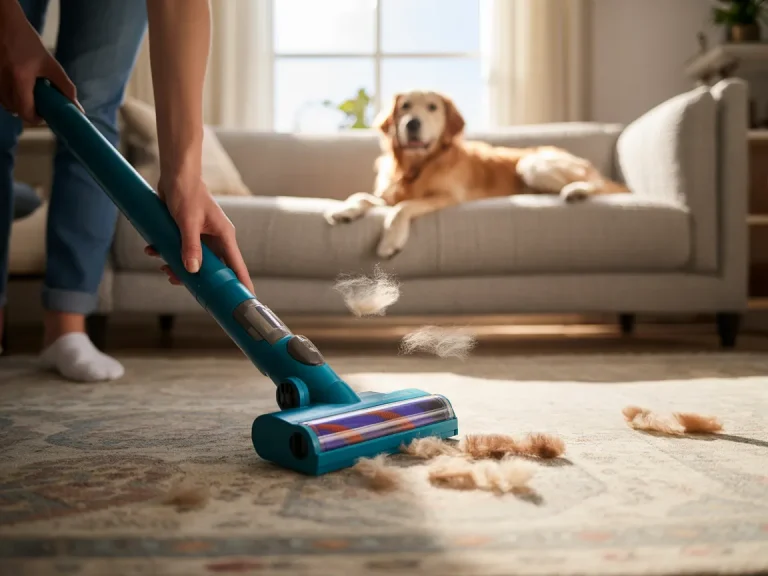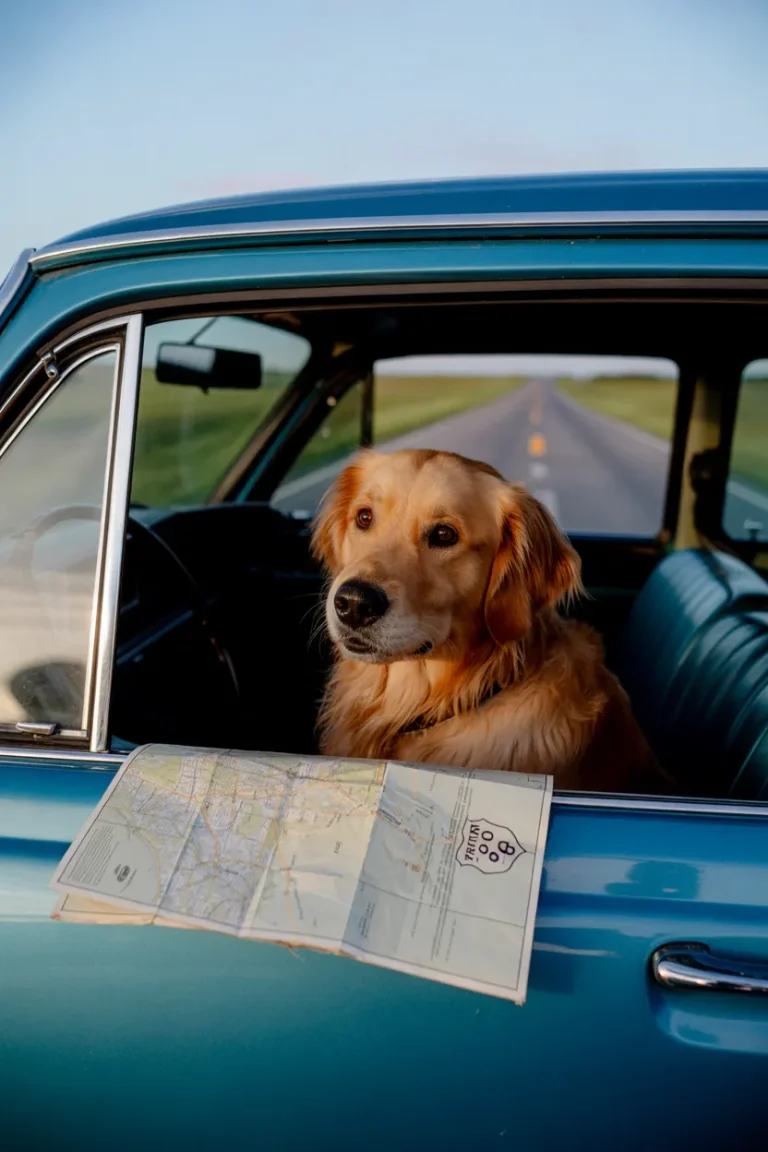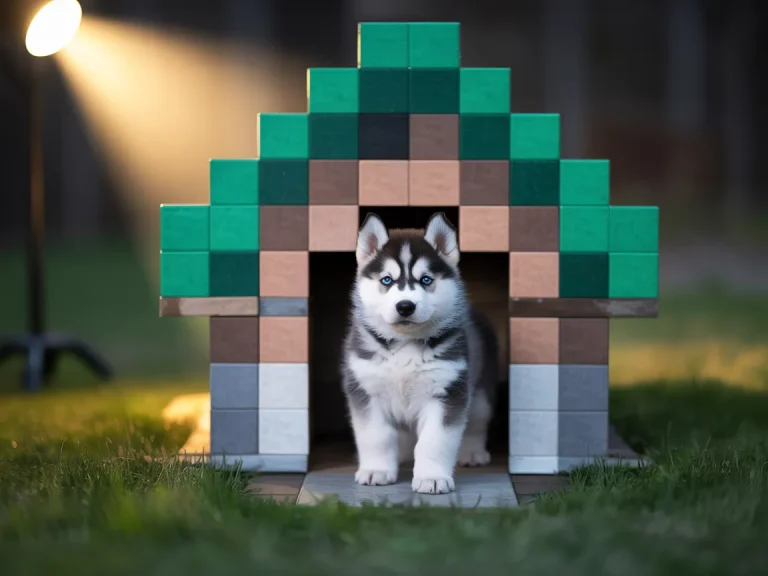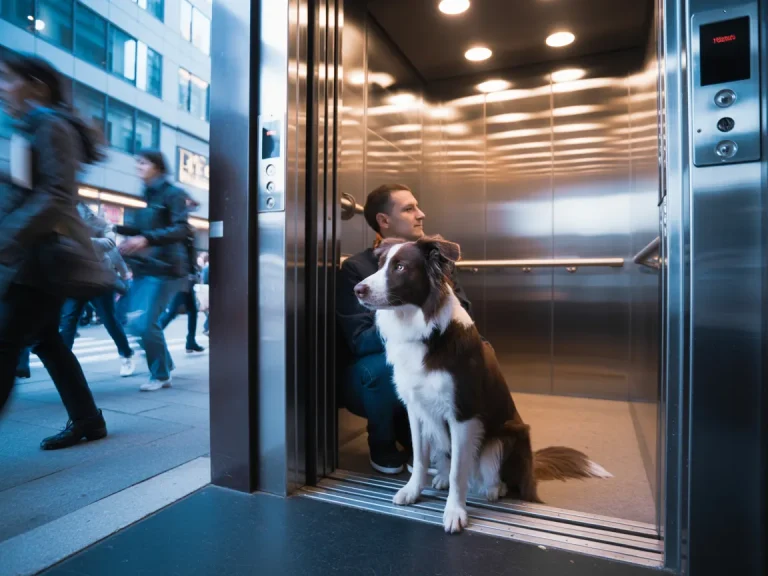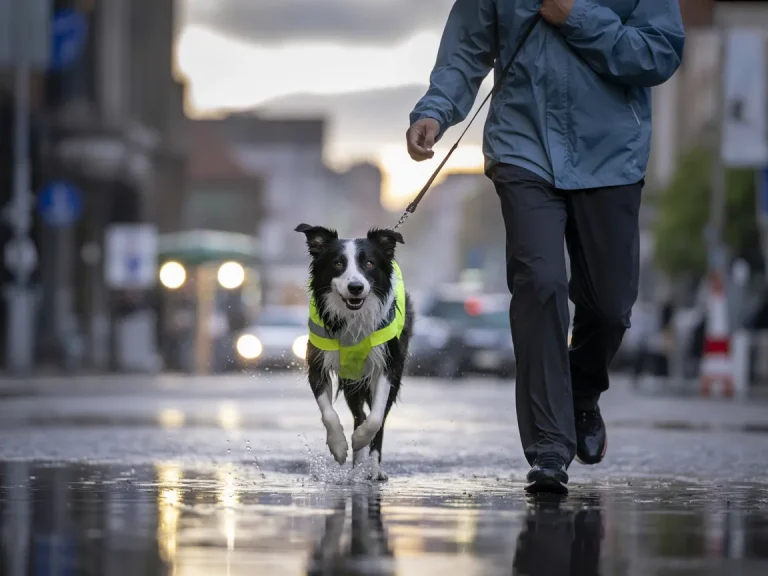Working from home with your dog can feel like winning the office lottery—a built-in buddy, instant stress relief, and a waggy little break timer. But without a plan, those sweet nose boops turn into “Hey, pay attention to me!” pings, restless laps around your chair, and reverse separation anxiety that wrecks your focus. In this article, I’ll share five game-changing moves to build a truly dog-friendly workspace—whether you’re setting up a dedicated dog room, tucking a mini dog-house retreat beside your desk, or fine-tuning daily routines—so you can protect your flow while giving your four-legged coworker a day that feels calm, rich, and right.
1. Design a “Work/Rest” Dog Room Zone
Dogs thrive on clear signals: this is chill time, that is play time. Create a small nook next to your workspace with soft bedding, a low-traffic view, and a couple of calming toys. Think of it as a “work/rest” zone—a cozy corner that doubles as a Do Not Disturb sign for paws. During focus blocks, park your pup there with a long-lasting chew, snuffle mat, or stuffed kong and let the routine do the heavy lifting.
Layer in gentle cues so the space feels different from the rest of the room: a particular blanket, dimmer light, maybe a dog-safe calming scent. When you take a break, use a short phrase like “play time!” and invite them out. After a few days, most dogs start choosing the nook on their own. I had a client whose terrier began trotting to his mat the moment the Zoom chime sounded—like clocking in for nap shift. Less pawing at your knee, fewer barks during calls, more peace for everyone.
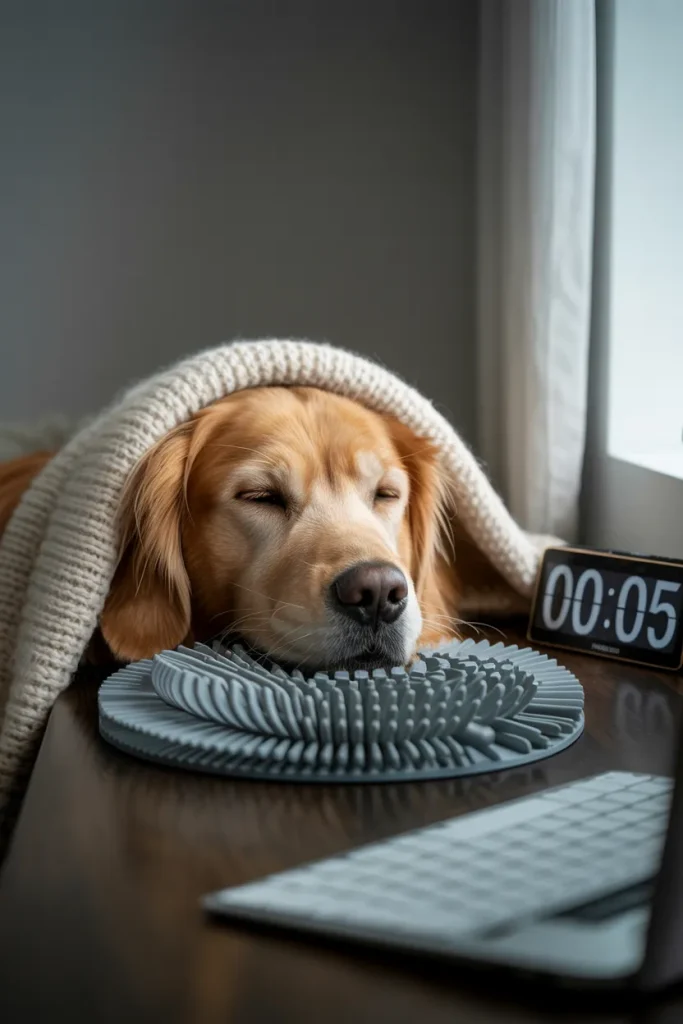
2. Strategic Placement of a Mini Indoor Dog House
A compact indoor dog house can be your secret weapon. It’s a den, a boundary marker, and a visual anchor that says, “You’re close, but not on the keyboard.” Place it within sight of your desk without turning it into a tripping hazard, and pick a design that matches your decor so it feels intentional, not like a last-minute add-on.
Use it as a “settle station.” Guide your dog inside, say “settle,” drop a treat, and practice short, calm stays. Slowly stretch the time and reward quiet behavior here and there—soft praise, a tiny nibble, nothing that winds them up. Before long, that little house becomes their studio apartment, rent paid in liver treats. One beagle client happily snoozed through two back-to-back meetings once his A-frame hideout moved beside a tall plant—close enough to feel included, far enough to stop the pacing loop.

3. Scheduled Shared Breaks and Movement Rituals
Don’t wait for the first whine to stand up—beat it to the punch with planned movement. Pair your productivity sprints with dog-friendly micro breaks: a five-minute stretch-and-sniff every 90 minutes, a midday brain-reset play burst, a quick pre-lunch walk for indoor scent games. These tiny rituals fuel your focus and give your dog a healthy outlet.
Name your breaks—“sniff reset,” “stretch with pup”—and use a simple timer (Pomodoro works great) so the rhythm stays consistent. Dogs love routine; when they learn the cadence, they stop interrupting because they trust playtime is coming. And you? You’ll come back to your desk with better circulation and fresher ideas. Win-win, tail included.
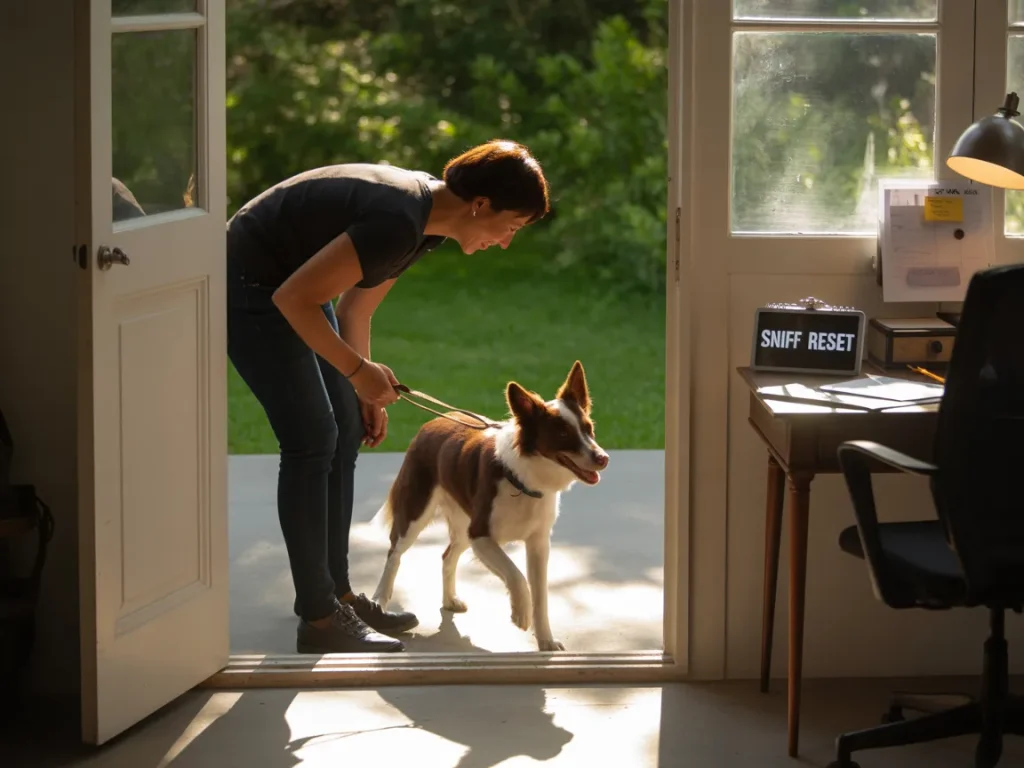
4. Visual and Acoustic Boundaries with Clear Work Cues
Dogs read rooms better than we do. Give yours a clear “office open/closed” sign: flip on a certain desk lamp, pull up a small partition, pop on your headphones, maybe even plant a tiny desk flag. Add a gentle background sound—white noise or soft instrumentals—so the whole vibe says, “I’m working now.” Do this consistently and your dog will start treating those cues like a red light at an intersection: pause and wait. For pups prone to separation anxiety, consistent cues like these are part of the fix.
When you’re done with a focus block, change the scene on purpose—lamp off, headphones down, and a simple release word like “all done.” It’s a small ritual, but it keeps your dog from guessing and stops those mid-call nose-taps. My shepherd mix learned that “headphones on” means no fetch requests—and “headphones off” is his green light to bring the squeaky taco.
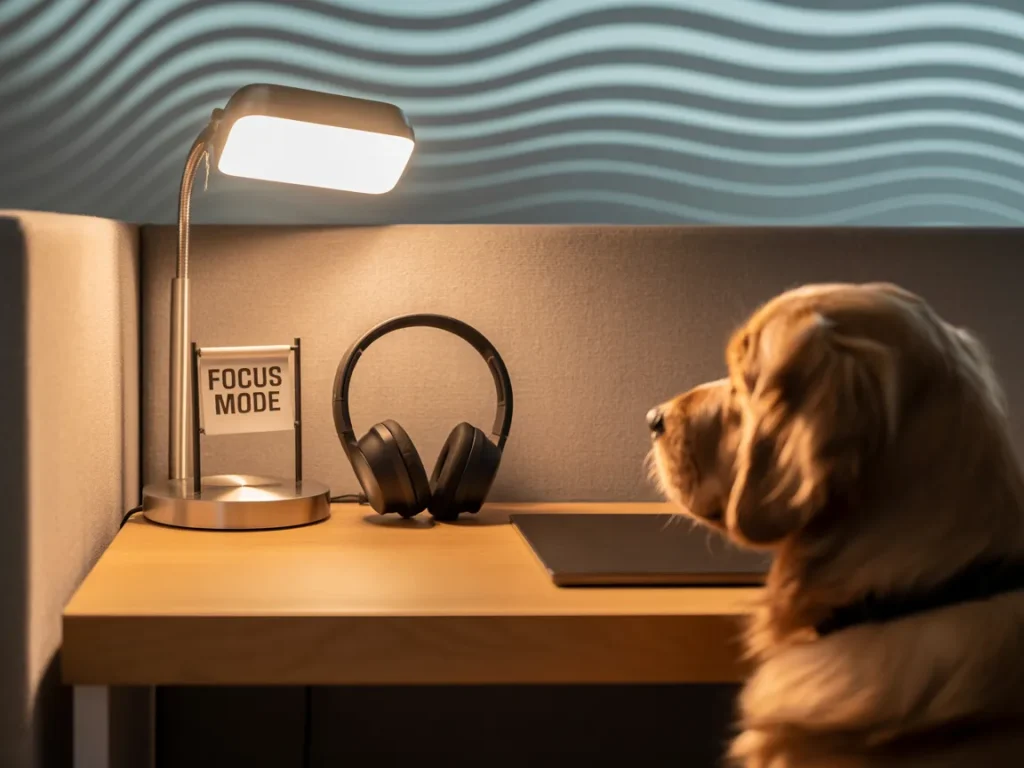
5. Create a Convenience “Command Center” for Dog Comfort
Think of this as your dog’s mini supply dock—like a diaper bag for your home office. Keep a spill-proof water station, a couple of rotating chews, quick wipes, and a few training treats within reach, plus a foldable mat for those “I just want to be near you” moments. When everything’s right there, you can care for your dog without derailing your flow (or your meeting).
Tech can help without turning your office into mission control. A low-key treat dispenser on a schedule, a calm-mode diffuser, or a simple camera with two-way audio lets you reassure or redirect if you step away. The goal isn’t gadget overload—it’s fewer interruptions and smoother days.
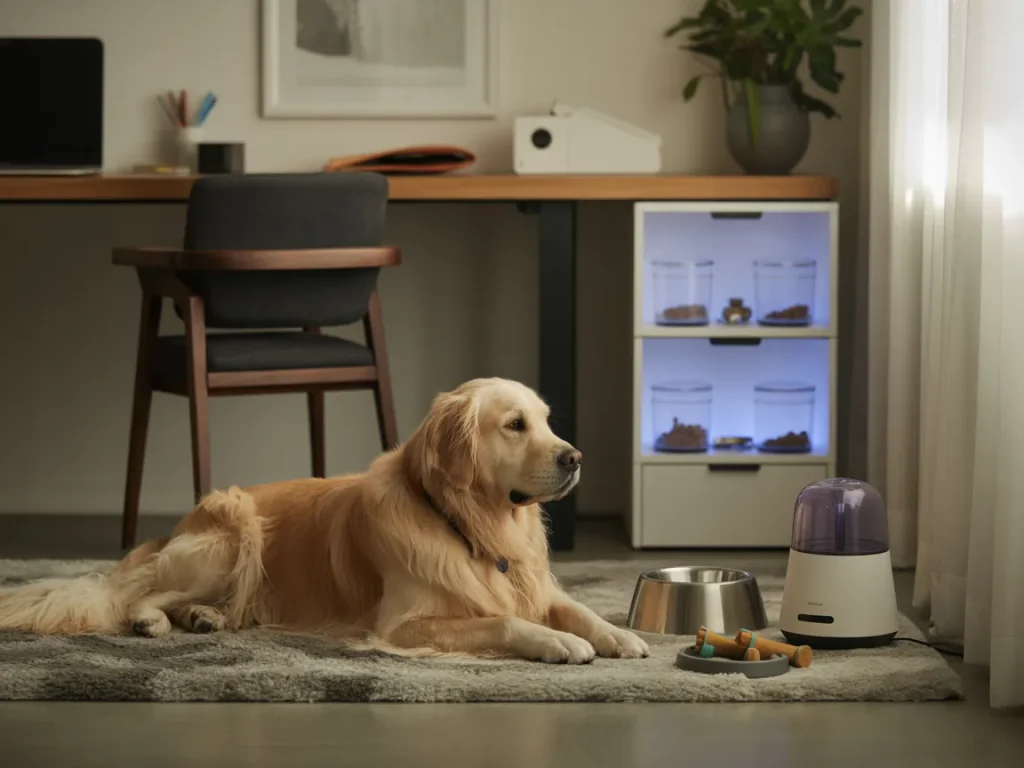
Bonus Strategy: Routine Review and Adaptation
Your work rhythm shifts, and so does your dog’s. Do a five-minute check every week: are they getting bored, or are breaks hitting the right times? Swap in a new scent, rotate toys, freshen the bedding, or tweak the “settle” reward. Tiny changes keep things interesting and stop your cues from blending into wallpaper.
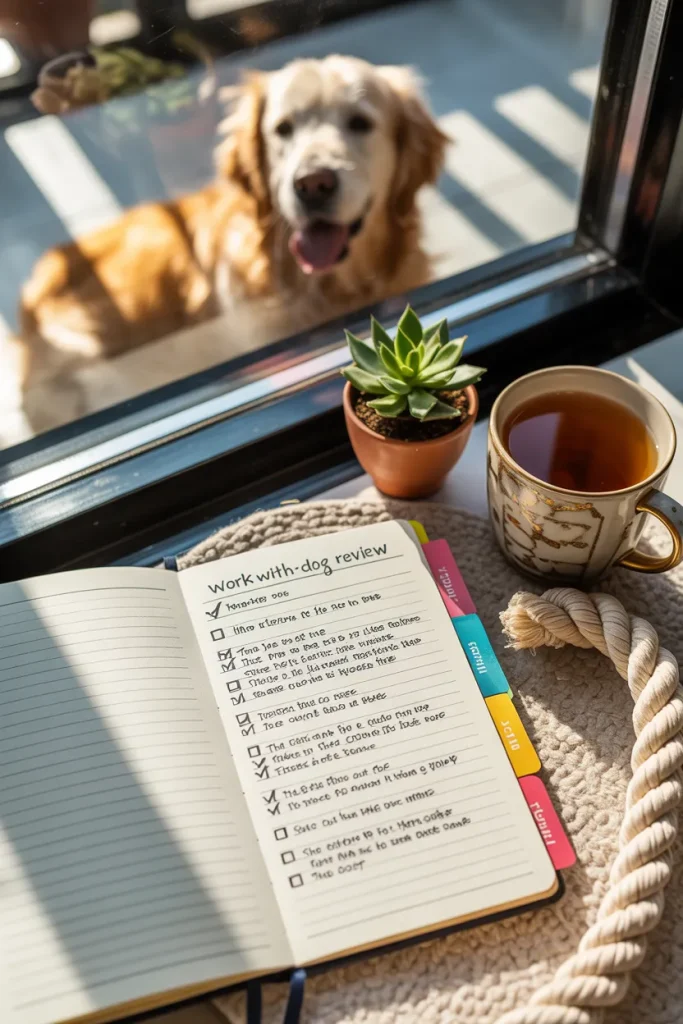
Conclusion
Working from home with your dog can be wonderfully smooth when you stack the right pieces—intentional setup, clear “work vs. play” cues, and shared rhythms. From a cozy dog-room nook and a stylish mini dog house to synced breaks, sound/visual boundaries, and a simple command center, these five moves keep your focus sharp while meeting your dog’s emotional and physical needs. Start with one small change today, watch how your pup responds, and keep tuning the routine until it feels like a duet that just clicks.
Disclaimer: This article is for informational purposes only and does not constitute professional veterinary advice. Always consult a licensed veterinarian or certified dog trainer regarding the specific needs and health of your dog.
